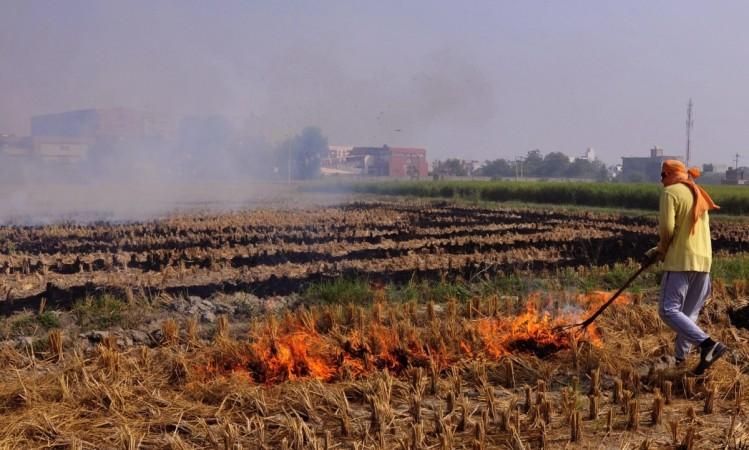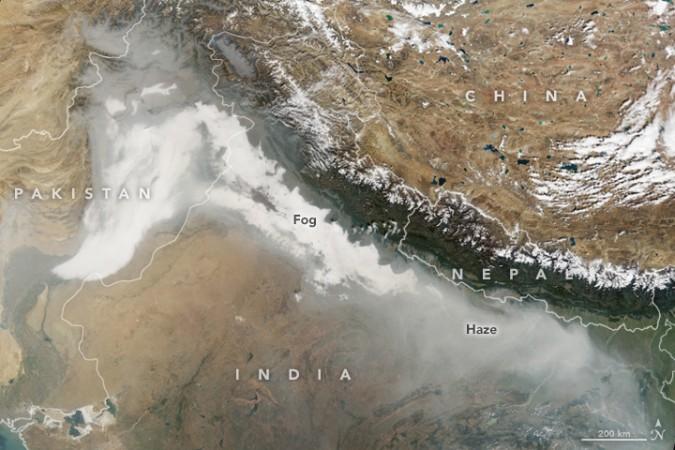
Living in areas where air pollution from stubble burning has been linked to high risk factor for respiratory dieseases, especially among children less than five years and the impact on economic loss is estimated to be over $30 billion, said a new study.
The crop residue burning (CRB), in vogue mostly in the northern India, is a leading risk factor for acute respiratory infection (ARI) among children that costs the exchequer Rs.2 lakh crore, said the study by researchers at the International Food Policy Research Institute (IFPRI) in association with partner institutes.
Poor air quality, with levels of airborne particulate matter in Delhi spiking to 20 times the World average, due to stubble burning by farmers in Haryana and Punjab, Delhi's ARI risk is increasing three-fold, said IFPRI Research Fellow and co-author of the study, Samuel Scott. The study has also estimated the health risk at $30 billion or Rs.200,000 crore annually for the three north Indian states.
India wants to reduce stubble burning by 70 percent in Haryana and Punjab but experts castigated the claim as far-fetched. "Bringing down crop stubble burning by up to 70 percent seems like a tall order even though there are things happening on the ground," said Sachchida Nand Tripathi, an IIT Kanpur professor, who works with the federal environment ministry on various pollution measures. "It's like a war, and a lot more needs to be done in terms of multi-agency coordination," he told Reuters last year.
The air quality index has risen above 300 (100+ is harmful) in parts of Delhi last season. Currently, the government is offering to pay for up to 80 percent of certain farm equipment in lieu of not burning stubble, while the Central Pollution Control Board has brought in stricter regulations, with little improvement.
In view of the worsening situation, using NASA satellite data on fire activity, the team analyzed health data from more than 2.5 lakh individuals living in rural and urban areas of India and compared those from CRB areas with non-CRB areas to find the variation in respiratory health. They also examined other triggers such as firecracker burning during Diwali and daily motor vehicle density.
The new estimate shows that economic losses due to air pollution from firecrackers are estimated to be around $7 billion or nearly Rs.50,000 crore a year. In five years, the economic loss due to burning of crop residue and firecrackers is estimated to be $190 billion, or nearly 1.7 per cent of India's GDP.

"Severe air pollution during winter months in northern India has led to a public health emergency. Crop burning will add to pollution and increase healthcare costs over time if immediate steps are not taken to reverse the situation," said Suman Chakrabarti, co-author of the study.
"Our study shows that it is not only the residents of Delhi, but also the women, children and men of rural Haryana who are the first victims of crop residue burning," said Avinash Kishore, another co-author.
Crop burning is a widespread practice in northwest India, and has spread to other regions in the past decade as farmers try to rush for next crop by quickly disposing off the previous crop's residue by burning the stubble rather than clearing the land manually.
The study will be published in an upcoming edition of the International Journal of Epidemiology.









!['Had denied Housefull franchise as they wanted me to wear a bikini': Tia Bajpai on turning down bold scripts [Exclusive]](https://data1.ibtimes.co.in/en/full/806605/had-denied-housefull-franchise-they-wanted-me-wear-bikini-tia-bajpai-turning-down-bold.png?w=220&h=138)



